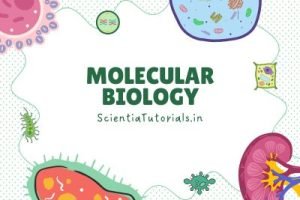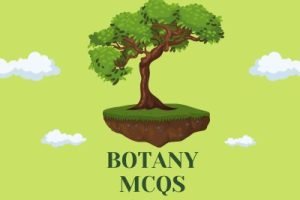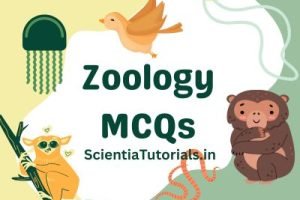MCQs on Histology
MCQs on Histology
1. Where are bicollateral vascular bundles found?
(a) Malvaceae
(b) Gramineae
(c) Cucurbitaceae
(d) Leguminosae
Sol:(c) Cucurbitaceae.
2. Why is grafting not possible in monocotyledons?
(a) Because they have scattered vascular bundles
(b) Because they lack cambium
(c) Because they are herbaceous
(d) Because they have parallel bundles
Sol:(a) Because they have scattered vascular bundles.
3. An example of vascular cambium is ________
(a) Lateral meristem
(b) Primary meristem
(c) Secondary meristem
(d) Intercalary meristem
Sol: (a) Lateral meristem.
4. Wounds in plants are healed by the activity of _________.
(a) Apical meristem
(b) Intercalary meristem
(c) Lateral meristem
(d) Secondary meristem
Sol: (d) Secondary meristem.
5. Where do we find the Casparian strips?
(a) Endodermis
(b) Hypodermis
(c) Pericycle
(d) Collenchyma
Sol: (a) Endodermis.
6. Which one is true about the sieve tube cells?
(a) Sieve tube cells are present in all plants
(b) Companion cells are regulated by nucleated sieve cells.
(c) Companion cells regulate the activity of non-nucleated sieve tube cells.
(d) Sieve tube cells are nucleated but lack endoplasmic reticulum and mitochondria.
Sol: (c) Companion cells regulate the activity of non-nucleated sieve tube cells.
7. Wounds in plants are healed by the activity of _________.
(a) Apical meristem
(b) Intercalary meristem
(c) Lateral meristem
(d) Secondary meristem
Sol: (d) Secondary meristem.
8. Which of the following tissues are involved in the conduction of water in plants?
(a) Xylem and phloem
(b) Parenchyma and sclerenchyma
(c) Tracheids and vessels
(d) Xylem fibres and bast fibres
Sol: (c) Tracheids and vessels.
9. Which of the following plant lacks vessels?
(a) Rose
(b) Pinus
(c) Gnetum
(d) Mango tree
Sol: (b) Pinus.
10. Examples of phloem fibres include
(a) Flax
(b) Hemp
(c) Jute
(d) All of the above
Sol: (d) All of the above.



